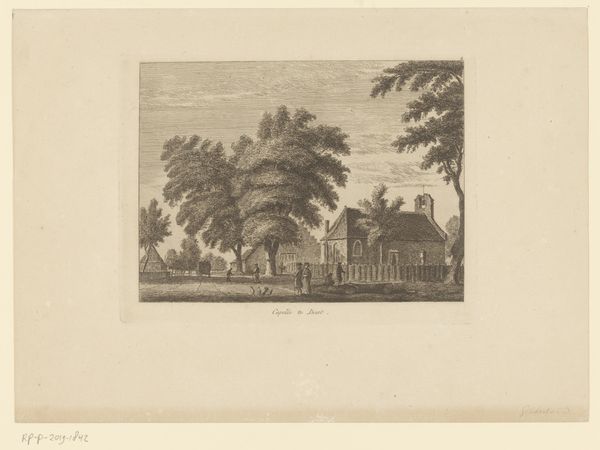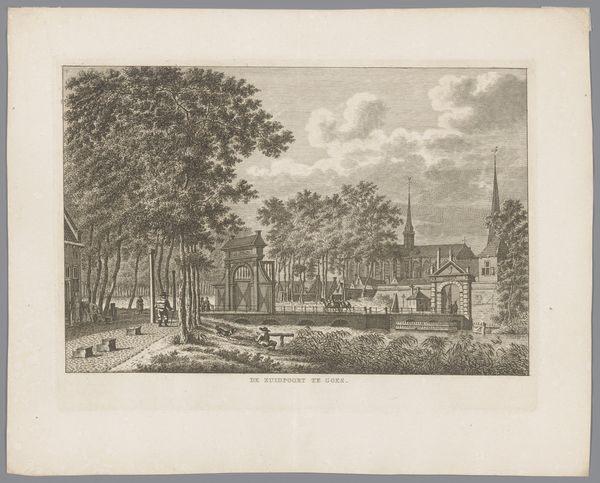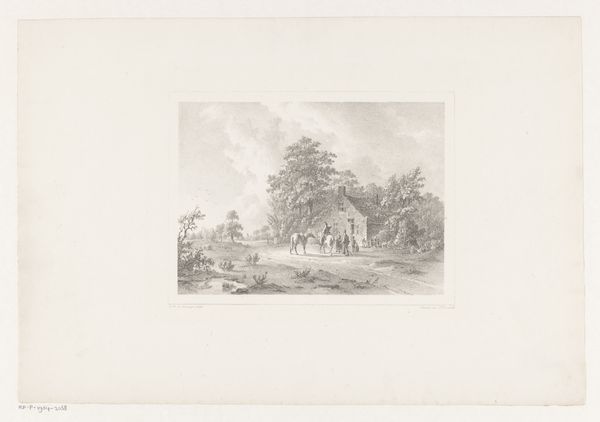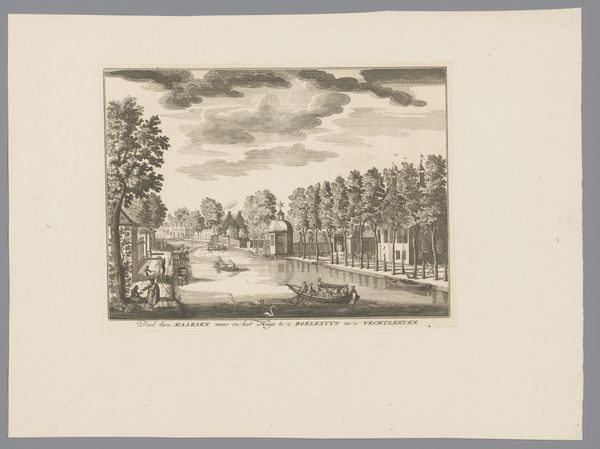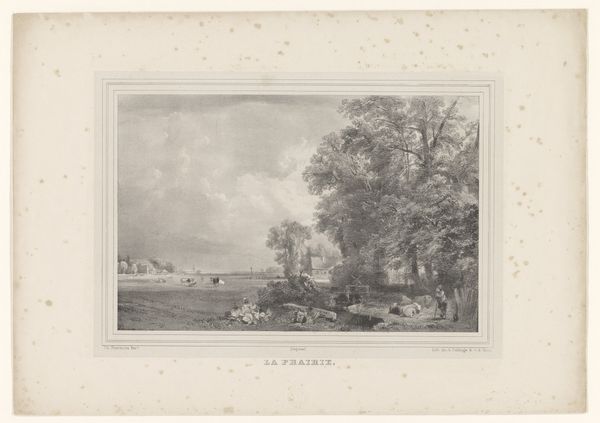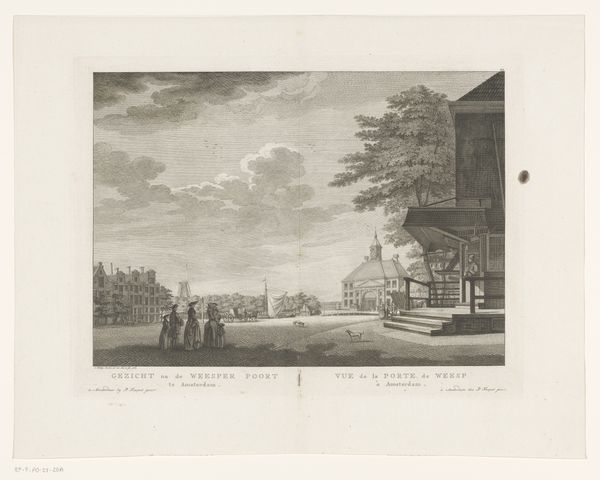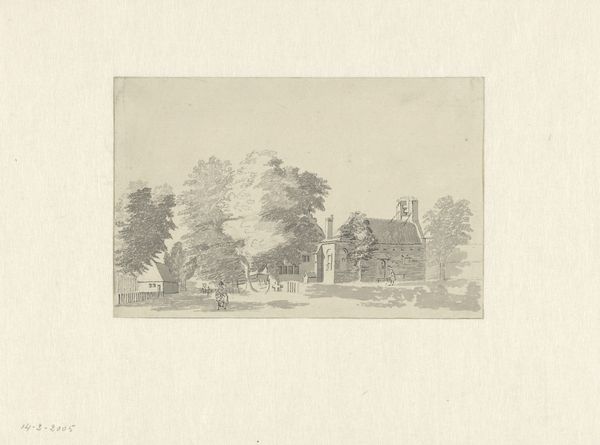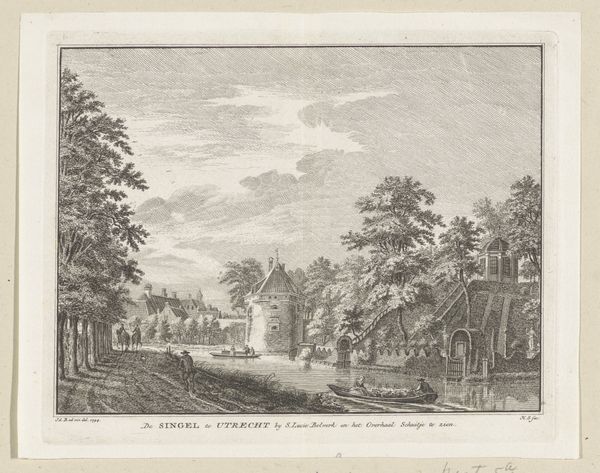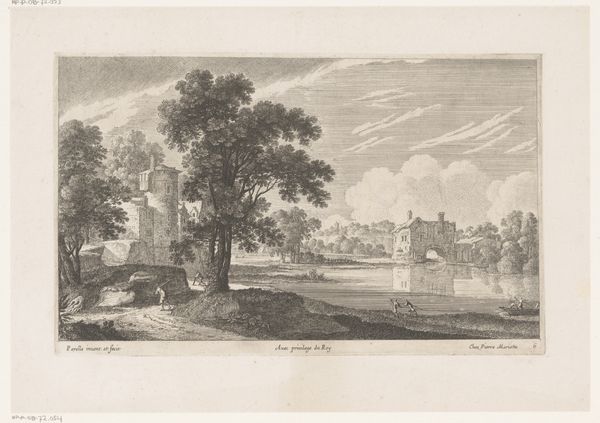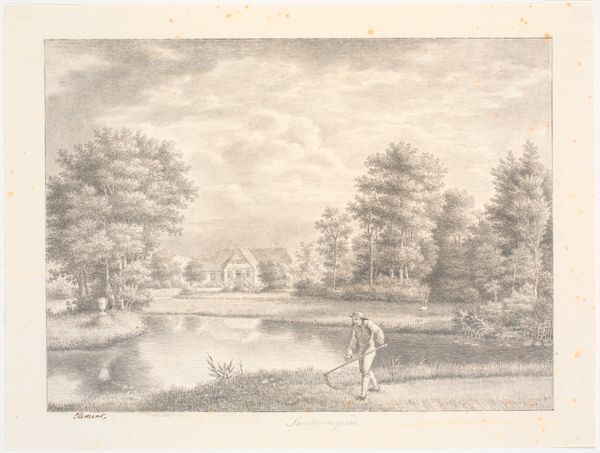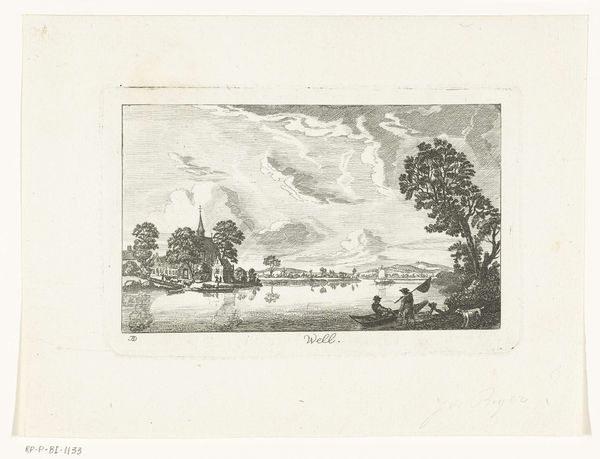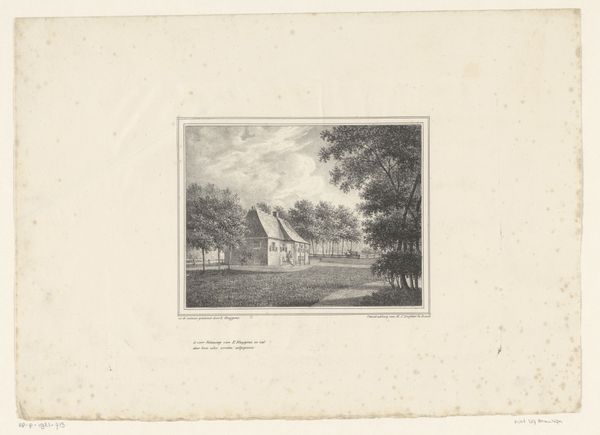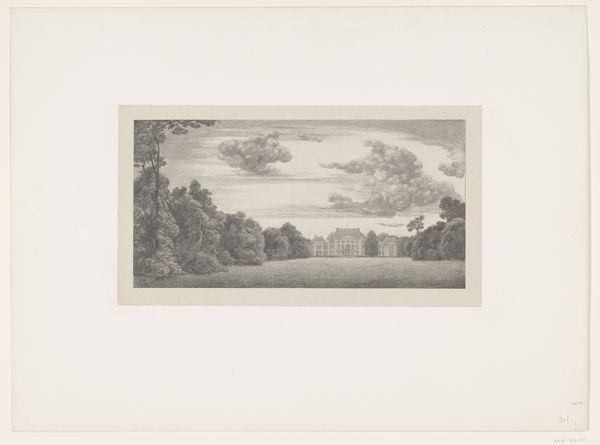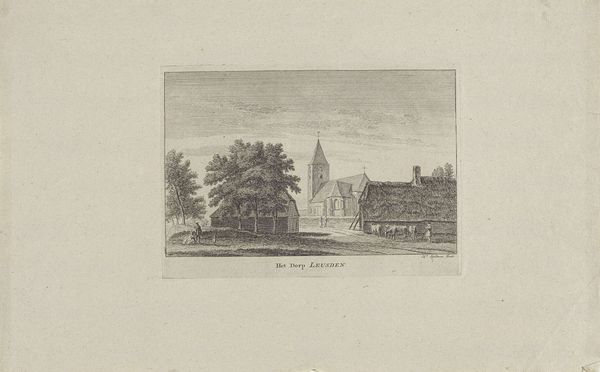
Dimensions: height 281 mm, width 367 mm
Copyright: Rijks Museum: Open Domain
Curator: Before us, we have Caspar Jacobsz. Philips’s “Gezicht op de Weteringpoort te Amsterdam,” created sometime between 1766 and 1783. It’s a lovely etching. Editor: It evokes a sense of tranquility—a scene where life unfolds at a gentle pace. The sky feels expansive, and the architecture is in subtle dialogue with the surrounding greenery. Curator: Indeed. Note the meticulous rendering of light and shadow. See how Philips utilizes line weight to establish spatial depth, creating a detailed visual language within the landscape's composition. Editor: But it's more than just lines, isn’t it? This area, the Weteringpoort, functioned as an entryway to Amsterdam, but also as a controlled access point that inevitably served the economic and social inequalities of the time, something the placid aesthetic of the print perhaps obscures. What wasn’t permitted through that gate? Curator: An astute point. We observe this gateway depicted through etching—a medium that, via its linear precision, conveys a sense of measured control characteristic of the Enlightenment. Editor: A "controlled" Enlightenment indeed! When we contextualize artmaking from this period, it's impossible to divorce these aesthetic choices from broader social mechanisms and access to power. Were all Amsterdammers reflected in this tranquil portrait? I think not. Curator: Regardless of representation, the interplay between light and shadow models Baroque pictorial conventions in an organized system, the geometric mirroring between structures on opposing riverbanks offers formal resolution, completing the image's satisfying structure. Editor: Satisfaction that rests on obscured narratives of inclusion and exclusion, that shaped whose story could, literally, pass through that gate, while others could not. It also provokes considerations about our contemporary moment of access, about whose voices continue to be excluded from canonical stories. Curator: I see your point; in either case, the artist skillfully structured line, and form, creating visual harmony. Editor: Agreed! In a historical frame, what appears visually stable on the surface belies narratives of its contested histories, doesn’t it? Art helps us consider where the line falls on those critical moments, prompting questions rather than tidy closures. Curator: Certainly, a productive exercise indeed!
Comments
No comments
Be the first to comment and join the conversation on the ultimate creative platform.
